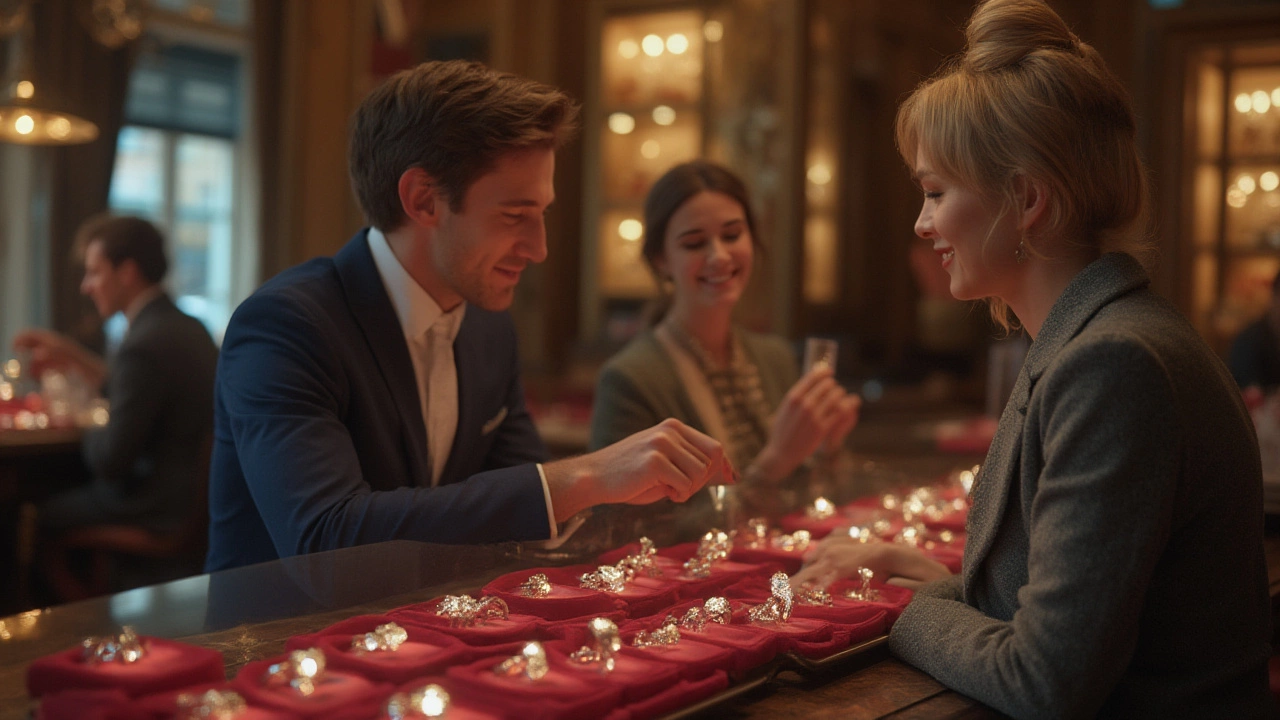Diamond Ring Carat Chart – Quick Guide to Picking the Right Size
If you’ve ever Googled "how big is a 0.75 carat diamond?" you probably landed on a carat chart. Those charts turn a confusing number into a visual idea of size. In this guide we’ll break down what a carat really means, how to use the chart, and what to watch out for when you shop.
What a Carat Measures
A carat is a weight unit, not a measurement of length. One carat equals 0.2 grams. Because diamonds are dense, a small change in weight can look like a big change in size. That’s why a 0.70‑carat stone often looks almost as big as a 0.80‑carat one, especially if the cut is good.
When you read a chart, you’re really seeing the average diameter (for round stones) or the table width (for fancy shapes) that corresponds to each weight. The numbers give you a ballpark, but the actual look will vary with cut quality, depth, and shape.
How to Read a Diamond Carat Chart
Start at the top left: the chart lists carat weights down the left side and the corresponding diameters across the top. Find the weight you’re interested in, then look at the diameter column. For example, a 0.50 carat round diamond typically measures about 5.1 mm in diameter.
Next, compare a few neighboring sizes. If 0.45 carat measures 4.9 mm and 0.55 carat measures 5.3 mm, you can see how a half‑carat jump adds roughly 0.2 mm. This tiny difference can feel huge on the finger, especially with a thin band.
Remember the chart is a guide, not a rule. Two 0.70 carat diamonds can look different if one is shallow and the other is deep. Always ask for a side‑view image or see the stone in person.
Tips for Choosing the Right Carat
1️⃣ Set a budget first. Carat price isn’t linear – a 1.00 carat stone costs much more than two 0.50 carat stones of the same quality.
2️⃣ Focus on cut. A well‑cut 0.70 carat can appear larger than a poorly cut 0.80 carat.
3️⃣ Think about the setting. A halo setting adds extra sparkle and can make a smaller center stone feel bigger.
4️⃣ Use the chart to spot sweet spots. Many couples find 0.70–0.90 carat offers the best size‑to‑price balance.
5️⃣ Don’t ignore personal preference. If you love a petite look, a 0.40 carat may be perfect even if the chart shows it’s “small.”
Common Misunderstandings
People often think a higher carat always means a better diamond. In reality, clarity, color, and cut each affect overall beauty. A 0.90 carat with poor cut can look dull compared to a 0.75 carat that’s excellently cut.
Another myth is that the chart tells you the exact size of every stone. Because each diamond is unique, the chart gives an average. That’s why seeing the stone or a high‑resolution video matters.
Putting It All Together
Use the carat chart as a starting point, then narrow down by cut, color, and clarity. Compare a few stones side by side, and pay attention to how they sit in the setting you like. When you find a size that feels right and fits your budget, you’ve made a smart choice.
Remember, the perfect diamond isn’t just about the number on the chart. It’s about how it looks on your hand and how it fits your story. Happy hunting!

- Jul, 6 2025
- Comments 0